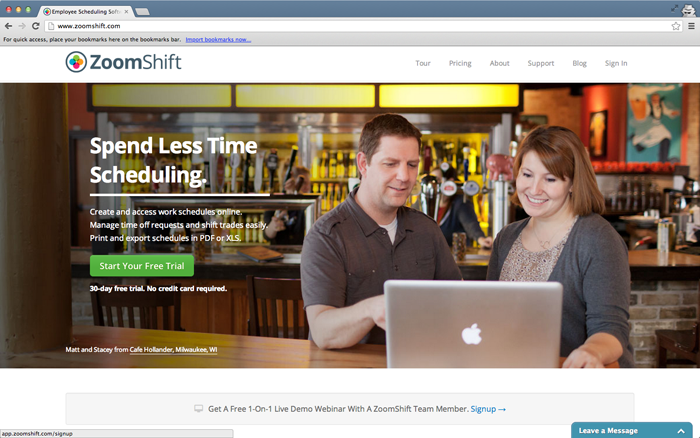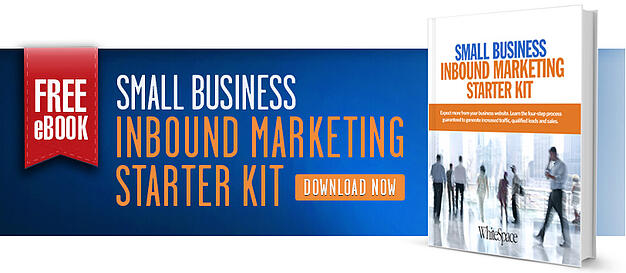 I think it is important to understand the difference between the time we spend generating leads, versus the time we could spend building a lead generation system. The difference is similar to working in your business versus working on your business.
I think it is important to understand the difference between the time we spend generating leads, versus the time we could spend building a lead generation system. The difference is similar to working in your business versus working on your business.
As a business owner, I have always been fascinated by systems. To me these are the components of what makes a successful business. The better your systems, the easier it will be to deliver your product/service and grow your business. Bottom line: better systems equals better profits.
Most business owners understand this, and are great at applying this principle to developing manufacturing systems, delivery systems, and accounting systems. But more often than not, they fall short when it comes to applying this to their sales and marketing efforts. When it comes to lead generation, they always seem to be flying by the seat of their pants, and we as marketers are guilty of letting them do this.
What Is A Lead Generation System?
For our purposes here, I am going to define a lead generation system, as a group of processes that are repeated on a regular basis to drive a predictable quantity of leads. I just made that up, but it sounds pretty good, doesn’t it?
To further clarify what I mean, let me illustrate an example of the exact opposite of a lead generation system. Have you ever tried to do a direct mail campaign, when you have never done it before? It usually goes something like this:
Hey, let’s try direct mail to generate some leads.
Okay.
What’s it going to cost?
Well... we can afford to do one mailing this year, to a small segment of our target audience.
Okay, Let’s try it.
Rick’s Marketing Rule - IF YOU CAN’T REPEAT IT, DON’T DO IT!
Now I’m not picking on direct mail, because if you can afford to do direct mail consistently, and it's part of your lead generation system, then that's great. What I’m pointing out, is how business owners and marketers waste resources launching one-off lead generation efforts. If you can’t afford to repeat the effort, then you just wasted everything you learned. Not to mention the marketing budget consumed.
So how do you build a lead generation system?
A simple way to start is by following inbound marketing methodologies. The first step is to begin by attracting strangers to your website. You accomplish this by blogging and then by sharing your articles through your social media networks.
But here is the trick — to make this a lead generation system you need to determine how frequently you can blog — realistically. You don’t want to make this a one-off effort too. If you have enough staff to generate two blog posts a week, then don’t try to do five. What you are shooting for here is a repeatable process. Developing an editorial calendar for your blog articles will help with this. You will also need to do the same for your social media activity. Your goal is to commit a consistent amount of time to social media each week. Even if it is only 15 minutes each week, it is more important to be consistent.
The second part of this involves converting those new website visitors into leads. To do this you will need to offer some unique piece of content on your website, and place it behind a lead capture form. You can create an ebook, webinar, white paper, or case study.
Again, the important thing here, is to have a schedule for creating new content on a regular basis throughout the year. This content can be top of the funnel, middle of the funnel, or bottom of the funnel. Every piece of content should appeal to your target audience.
Just by implementing these two processes you will have the foundation of a lead generation system in place. You can then refine it by adding processes such as: lead nurturing, lead scoring, list segmentation, and workflow automation.
Just like they always say, “Consult with your doctor before starting any exercise program,” you should consult with a professional inbound marketing agency before implementing your lead generation plan. They can help you determine the best way to go about creating a lead generation system for your sales team.
How are you currently generating leads for your sales team? Share your thoughts in the comments section
About the Author: Rick Kranz is the Founder of OverGo Studio, a HubSpot certified partner agency specializing in inbound marketing services. You can connect with Rick via Twitter, LinkedIn, or Google+

Photo Credit: L. Richard Martin, Jr.


 In July of 2012 we began working with a company that designs and manufactures custom fiberglass pipe, large diameter fiberglass ductwork, fiberglass tanks, fiberglass vessels, other equipment and services relating to fiberglass products. This company is a subsidiary of a larger parent company, and for a number of years was content to supply cooling tower components for the parent company's projects. We began working with them because they felt it was time to branch out and had turned to HubSpot and inbound marketing to help them reach new markets.
In July of 2012 we began working with a company that designs and manufactures custom fiberglass pipe, large diameter fiberglass ductwork, fiberglass tanks, fiberglass vessels, other equipment and services relating to fiberglass products. This company is a subsidiary of a larger parent company, and for a number of years was content to supply cooling tower components for the parent company's projects. We began working with them because they felt it was time to branch out and had turned to HubSpot and inbound marketing to help them reach new markets. I think it is important to understand the difference between the time we spend generating leads, versus the time we could spend building a
I think it is important to understand the difference between the time we spend generating leads, versus the time we could spend building a 
 As marketers, we can all agree the journey a consumer takes from lead to customer today is much different than it was 10 years ago. However, email still plays a major role in that process. Almost
As marketers, we can all agree the journey a consumer takes from lead to customer today is much different than it was 10 years ago. However, email still plays a major role in that process. Almost  Mazda car company decided to forgo its popular “zoom zoom” advertising campaign this year in favor of an ad that
Mazda car company decided to forgo its popular “zoom zoom” advertising campaign this year in favor of an ad that  Jon Hainstock (
Jon Hainstock (
 You don't want your prospects to need these to make your site experience better!
You don't want your prospects to need these to make your site experience better!

